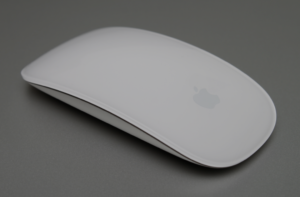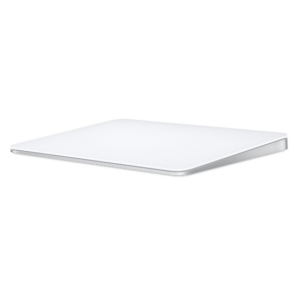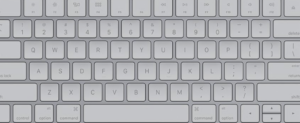In the ever-evolving tapestry of technology, Apple stands as a master weaver, constantly introducing threads that promise to alter the landscape of gadgets and gizmos. As the world watches with bated breath, Apple has finally stitched a new and much-anticipated strand into its offerings—USB-C connectivity for its line of accessories. This development may seem like just another technological leap, but for aficionados of the brand, it signals a significant shift. In the spirit of embracing simplicity, it’s worth delving into why this change matters, how it enhances the user experience, and what it portends for the future of Apple’s ecosystem.
The Rationale Behind Apple’s Shift to USB-C
Global Compatibility and Standardization
One of the driving forces behind Apple’s move to integrate USB-C into its accessories is the push towards global compatibility and standardization. As other tech giants have embraced USB-C, Apple finds itself compelled to align with this industry-wide standard. Doing so not only meets regulatory expectations but also aligns with consumer desires for uniformity across devices. Plus, it offers the end-user a simpler, more cohesive experience, where a single cord charges everything from laptops to tablets and now, to magic keyboards and mice.
Environmental Considerations
Furthermore, this transition reflects Apple’s commitment to environmental responsibility. By reducing the number and type of cables needed, Apple is effectively minimizing electronic waste—a noble endeavor in our current climate. It’s a small, yet impactful step towards a more sustainable world, underscoring Apple’s broader mission to incorporate green practices into their product lifecycle.
Enhanced User Experience
Moreover, the USB-C integration promises to address several of the past grievances users had with Apple accessories. The often-criticized lightning port on Magic Mouse and trackpads gave rise to less-than-ideal charging scenarios, sometimes rendering the device unusable during the charging process. With USB-C, users can expect not only faster charging times but also the convenience of repositioned ports that allow continued use while powering up.
The Line-Up: Accessories Now with USB-C
Apple’s shift to USB-C isn’t just a whisper in the wind; it’s a complete update to its revered line of accessories. This change finds its way into some of Apple’s most beloved tools that have graced desks worldwide, introducing renewed efficiency and functionality.
Magic Mouse
Despite its design elegance, the Magic Mouse has been a frequent topic of discussion—sometimes derision—
 due to its charging method. With the integration of USB-C, users can now revel in a more practical solution. The charging port has been repositioned for ease of use without the awkward scenarios of the past, ensuring that users no longer need to pause their productivity for hours on end. Plus, the rapid charging capabilities of USB-C mean spending less time tethered and more time navigating through digital realms.
due to its charging method. With the integration of USB-C, users can now revel in a more practical solution. The charging port has been repositioned for ease of use without the awkward scenarios of the past, ensuring that users no longer need to pause their productivity for hours on end. Plus, the rapid charging capabilities of USB-C mean spending less time tethered and more time navigating through digital realms.
Magic Trackpad
The Magic Trackpad, a preferred choice for users seeking precision  and gesture control, also benefits from this transition. USB-C provides robust power delivery and data exchange, enhancing the trackpad’s responsiveness and reliability. The change ensures that multitouch gestures are as fluidas ever, aligninnicely with Apple’s vision of seamless user interactions.
and gesture control, also benefits from this transition. USB-C provides robust power delivery and data exchange, enhancing the trackpad’s responsiveness and reliability. The change ensures that multitouch gestures are as fluidas ever, aligninnicely with Apple’s vision of seamless user interactions.
Magic Keyboard

For those whose fingers dance across Apple’s Magic Keyboard, the inclusion of USB-C offers a harmonious experience. Whether you’re using the model with or without a numeric keypad, the USB-C integration means connecting and charging becomes a more intuitive part of your daily routine. As Apple continues to knit USB-C into its ecosystem, the keyboard becomes not just an accessory, but a vital tool in professional and creative endeavors alike.
The Bigger Picture: Apple’s Ecosystem Strategy
Apple’s decision to integrate USB-C into its accessories is not an isolated move. It’s a deliberate step in what appears to be a grander strategy—ushering in a new era for the Apple ecosystem. This shift suggests that Apple is not just navigating the current streams of technological progress but setting the stage for future innovations that capitalize on USB-C’s capabilities.
Synergy with Other Apple Devices
These USB-C integrations create new synergy with other Apple devices that have already adopted USB-C, such as certain iPads and MacBooks. It opens the door for interconnected functionalities, where devices not only co-exist but operate in concert more efficiently. The alignment offers a comprehensive and unified experience that has long been a hallmark of Apple’s product design philosophy.
Anticipation of Future Innovations
Looking forward, this equates to laying the groundwork for the next chapter in Apple’s journey—one in which interoperability and innovation are more tightly woven into the fabric of their ecosystem. As USB-C becomes more entrenched, one can only speculate about the bountiful possibilities for expanded capabilities, perhaps even new product lines, that complement Apple’s existing offerings.
The resonance of Apple adopting USB-C echoes beyond just a change in hardware. It’s a signal—a beacon to competitors and partners alike—that Apple continues to recalibrate its compass, steering towards the horizons of forward-thinking technological excellence.
Apple’s quiet revolution with USB-C is a proclamation wrapped in simplicity and functionality. It’s a step towards universal connection and ecological mindfulness. For consumers, it means greater harmony across devices and streamlined day-to-day utility. As Apple weaves this thread into its rich tapestry, it reminds us that progress is a journey—a collection of intentional choices that, when strung together, create a narrative of innovation and possibility.



